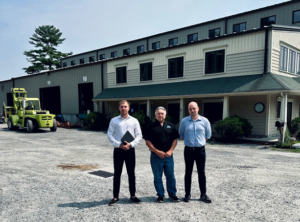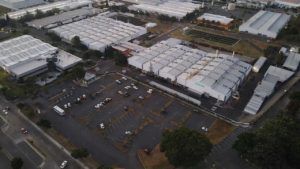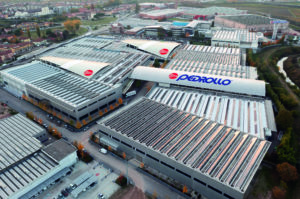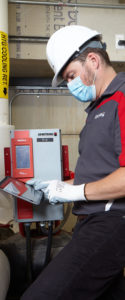Baker Hughes Announces Fourth Quarter and Annual Results
Baker Hughes Incorporated announced results for the fourth quarter and full year of 2016.
“During 2016, against the back-drop of another difficult year for the industry, we achieved significant progress on our commitment to improve financial performance by reducing operational costs, optimizing our capital structure, and strengthening our commercial strategy,” said Martin Craighead, Baker Hughes Chairman and Chief Executive Officer.
“In the second half of 2016, we reduced annualized costs by nearly $700 million, exceeding our initial goal by almost 40%, paid down $1 billion in debt, repurchased more than $750 million in shares, accelerated innovation with nearly 70 new product introductions, and built new sales channels for our products and technology. As we executed on an asset-light strategy to strengthen profitability and return on invested capital, we rationalized under-performing product lines in select markets and contributed our North America land pressure pumping business into a new venture that is exceptionally well positioned to participate efficiently and cost-effectively in the growth of this market segment.
“For the fourth quarter, revenue increased 2% sequentially as a result of increased activity in North America, uplift from better-than-expected seasonal year-end product sales, and pockets of growth internationally, primarily in the Middle East. This was partially offset by reduced activity across the North Sea resulting from labor union strikes, weather delays, and project postponements. This quarter we also achieved a sequential reduction in operating losses, generated $632 million of cash flow from operations, and ended the year with $4.6 billion in cash.
“Looking ahead for the first half of 2017, we expect onshore revenue in North America to increase as our customers ramp up activity, with service pricing improving but limited by overcapacity. Internationally, we are forecasting activity declines and continued pricing pressure, with pockets of growth onshore. In offshore markets, particularly deepwater, activity declines are expected to be more severe. As such, we remain focused on managing our costs and aggressively identifying revenue opportunities for our products and technology that can help our customers achieve their business objectives.
“In closing, with regard to the pending GE Oil & Gas merger, my excitement about the opportunities this transformative combination will deliver for our customers, shareholders, and employees, and the industry as a whole, has only grown since we announced the transaction in late October. GE Oil & Gas and Baker Hughes are an exceptional fit, with highly talented teams, similar cultures of innovation, and industry-leading capabilities. The integration planning teams are making good progress, the regulatory review process is proceeding as planned, and we continue to expect a mid-2017 close.”
2016 Full Year Results
Revenue for the year was $9.8 billion, down $5.9 billion, or 37%, compared to $15.7 billion for 2015. This reduction resulted from the steep decline in activity, as evident by the 32% drop in the average rig count, global pricing pressures, and sharply reduced revenue in onshore pressure pumping as we strived to maintain cash flow positive operations.
On a GAAP basis, net loss attributable to Baker Hughes was $2.7 billion ($6.31 per diluted share), compared to net loss of $2.0 billion ($4.49 per diluted share) for 2015.
Adjusted net loss (a non-GAAP measure) for the year was $1.3 billion ($2.96 per diluted share), compared to an adjusted net loss of $209 million ($0.48 per diluted share) for the prior year. A complete list of the adjusted items and associated reconciliation has been provided in Table 1a.
Adjusted EBITDA (a non-GAAP measure) for 2016 was $493 million, a decrease of $1.3 billion, compared to $1.8 billion in the prior year.
Cash flows provided by operating activities were $4.2 billion for the year, an increase of $2.4 billion, compared to 2015. Free cash flow (a non-GAAP measure) for the full year was $4.2 billion, compared to $1.2 billion in 2015. These increases are driven primarily by Halliburton’s payment of the $3.5 billion merger termination fee.
For the year, capital expenditures were $332 million, a decrease of $633 million, or 66%, compared to 2015. This reduction is attributable to reduced activity levels and our continued focus on capital discipline. Depreciation and amortization expense for the year was $1.2 billion, down $576 million, or 33%, compared to $1.7 billion in 2015. The decline in depreciation and amortization expense is primarily driven by asset impairments and lower capital spending.
Income tax expense was $696 million for the year, an effective tax rate of (34.1%), compared to 24.5% for 2015. The negative effective tax rate in 2016 is driven primarily by valuation allowances recorded against U.S. and non-U.S. deferred tax assets.
During the course of 2016, we repurchased 16.2 million shares of common stock totaling $763 million.
2016 Fourth Quarter Results
Revenue for the quarter was $2.4 billion, an increase of $57 million, or 2%, sequentially. Compared to the same quarter last year, revenue was down $1.0 billion, or 29%. Sequentially, the increase in revenue was driven primarily by increased activity in North America, year-end product sales, and pockets of growth internationally. This increase was partially offset by reduced activity in the North Sea, mainly as a result of labor union strikes and weather delays in Norway and postponed projects in the U.K.
On a GAAP basis, net loss attributable to Baker Hughes for the fourth quarter was $417 million, or $0.98 per diluted share, compared to $429 million, or $1.00 per diluted share, in the third quarter of 2016. The fourth quarter includes after-tax charges of $291 million, or $0.68 per diluted share, related to asset impairments, restructuring charges, loss on sale of a majority interest in the North America onshore pressure pumping business, inventory write-offs, and costs associated with the merger.
Adjusted net loss (a non-GAAP measure) for the quarter was $126 million, or $0.30 per diluted share. Adjusted net loss excludes the above adjustments totaling $291 million after-tax, or $0.68 per diluted share. A complete list of the adjusted items and associated reconciliation has been provided in Table 1a.
Adjusted EBITDA (a non-GAAP measure) was $266 million for the quarter, a decrease of $3 million, or 1% sequentially, and down $110 million, or 29%, compared to the fourth quarter of 2015.
Cash flows provided by operating activities were $632 million for the quarter, an increase of $513 million sequentially and $101 million year-over-year. Free cash flow (a non-GAAP measure) for the quarter was $610 million, an increase of $501 million sequentially and $174 million year-over-year. This does not include the proceeds from the North America onshore pressure pumping transaction. The sequential increase in cash flows is driven primarily by a tax refund in the U.S. of $415 million.
Capital expenditures for the quarter were $106 million, up $36 million, sequentially, and down $108 million, or 50%, compared to the fourth quarter of 2015. Depreciation and amortization expense for the quarter was $245 million, a decline of $17 million, or 6%, sequentially, and down $171 million, or 41%, compared to the same quarter of last year.
Corporate costs were $19 million in the quarter, compared to $78 million in the prior quarter and $29 million in the fourth quarter of 2015. The sequential decrease in corporate costs was primarily due to a $23-million investment gain recognized in the current quarter and $41 million of litigation settlements in the third quarter that did not repeat.
Income tax expense was $107 million for the quarter, an effective tax rate of (35%), compared to (19.4%) in the third quarter of 2016. As a result of geographic mix of earnings and losses, impairments, restructuring charges, and other discrete tax items, our tax rate has been, and will continue to be, volatile until the market stabilizes.
In the fourth quarter of 2016 we did not repurchase any shares due to restrictions under our merger agreement.
North America
North America revenue of $775 million for the quarter increased 15% sequentially. The sequential increase was driven by improved activity in the U.S. onshore business, seasonal improvements in Canada, and completions project deliveries in the Gulf of Mexico. Despite the increase in activity, the competitive landscape remained challenging across the entire segment, keeping a downward pressure on price.
Operating loss before tax for the fourth quarter was $86 million, compared to $65 million in the prior quarter. The reduced profitability sequentially was driven primarily by a $30-million inventory write-off and a $28-million benefit from non-recurring items in the third quarter, not repeating in the fourth quarter. This was partially offset by increased profits from revenue and incremental savings from ongoing cost reduction efforts.
Adjusted operating loss before tax (a non-GAAP measure), which excludes the inventory write-off, was $56 million for the fourth quarter, an $18-million improvement compared to $74 million in the prior quarter.
Latin America
Latin America revenue of $225 million in the quarter decreased 7% sequentially against the backdrop of a 2% rig count reduction. The decrease in revenue was driven mainly by reduced activity in most of the region, primarily Brazil, and a one-time product sale in the Andean area in the third quarter, not repeating in the fourth quarter. This was partially offset by increased activity in the Andean area and year-end product sales.
Operating profit before tax for the fourth quarter was $13 million, a decrease of $7 million, compared to $20 million in the prior quarter. The reduction in profitability was driven by the one-time sale and $3 million of non-recurring benefits in the prior quarter, not repeating, and activity reductions across most of the regions. This decline was partially offset by cost reductions from restructuring efforts and lower depreciation and amortization expense.
Adjusted operating profit before tax (a non-GAAP measure) was $13 million for the fourth quarter, down $3 million sequentially.
Europe/Africa/Russia Caspian
Europe/Africa/Russia Caspian revenue of $490 million for the quarter decreased 6% sequentially, primarily due to reduced activity in the North Sea, mainly as a result of labor union strikes, weather delays, and project postponements, and unfavorable exchange rates across the region, primarily in the Nigerian Naira and the British Pound. Revenue was also negatively impacted by ongoing labor union strikes in Nigeria. These revenue declines were partially offset by year-end product sales.
Operating loss before tax for the fourth quarter was $19 million, a decrease of $41 million, compared to an operating profit before tax of $22 million in the prior quarter. The reduction in profitability was mainly related to activity delays in the North Sea, $14 million of foreign exchange losses related to the devaluation of the Egyptian pound, and $5 million of one-time benefits in the third quarter, not repeating. This was partially offset by savings from ongoing cost reduction efforts and reduced depreciation and amortization expense.
Adjusted operating loss before tax (a non-GAAP measure) was $19 million for the fourth quarter, a $32-million decrease compared to the $13-million adjusted operating profit before tax in the prior quarter.
Middle East/Asia Pacific
Middle East/Asia Pacific revenue of $687 million for the quarter was up by 6% sequentially. The growth in revenue was driven primarily by year-end product sales in Qatar, China, and Saudi Arabia, and pockets of activity growth in the Middle East, including Saudi Arabia and Kuwait.
Operating profit before tax for the fourth quarter was $91 million, an increase of $20 million, compared to $71 million in the prior quarter. The increase in profitability was driven mostly by higher revenue, including year-end product sales, $14 million of bad debt reversals, savings from ongoing cost reductions, and lower depreciation and amortization expense. This was partially offset by the $6 million benefit from non-recurring items in the third quarter, not repeating this quarter.
Adjusted operating profit before tax (a non-GAAP measure) was $91 million for the fourth quarter, an increase of $28 million, compared to $63 million in the prior quarter.
Industrial Services
Industrial Services revenue of $233 million for the quarter decreased 13% sequentially. The decrease in revenue was mainly related to project delays and seasonal activity declines in the process and pipeline business.
Operating profit before tax for the fourth quarter was $11 million, a decrease of $19 million, compared to $30 million in the prior quarter. The sequential decrease in profitability was primarily driven by the activity reductions and exacerbated by the $3-million benefit from non-recurring items in the third quarter, not repeating this quarter.
Adjusted operating profit before tax (a non-GAAP measure) was $11 million for the fourth quarter, $15 million less than the $26-million in the prior quarter.
Source: Baker Hughes, a GE comany LLC







